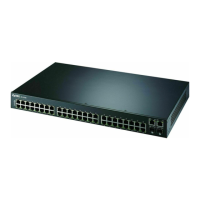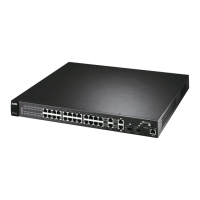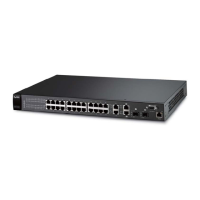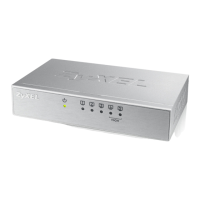ES-2024 Series User’s Guide
137
CHAPTER 17
Link Aggregation
This chapter shows you how to logically aggregate physical links to form one
logical, higher-bandwidth link.
17.1 Link Aggregation Overview
Link aggregation (trunking) is the grouping of physical ports into one logical
higher-capacity link. You may want to trunk ports if for example, it is cheaper to
use multiple lower-speed links than to under-utilize a high-speed, but more costly,
single-port link.
However, the more ports you aggregate then the fewer available ports you have. A
trunk group is one logical link containing multiple ports.
The beginning port of each trunk group must be physically connected to form a
trunk group.
The Switch supports both static and dynamic link aggregation.
Note: In a properly planned network, it is recommended to implement static link
aggregation only. This ensures increased network stability and control over the
trunk groups on your Switch.
See Section 17.6 on page 142 for a static port trunking example.
17.2 Dynamic Link Aggregation
The Switch adheres to the IEEE 802.3ad standard for static and dynamic (LACP)
port trunking.
The Switch supports the link aggregation IEEE802.3ad standard. This standard
describes the Link Aggregate Control Protocol (LACP), which is a protocol that
dynamically creates and manages trunk groups.

